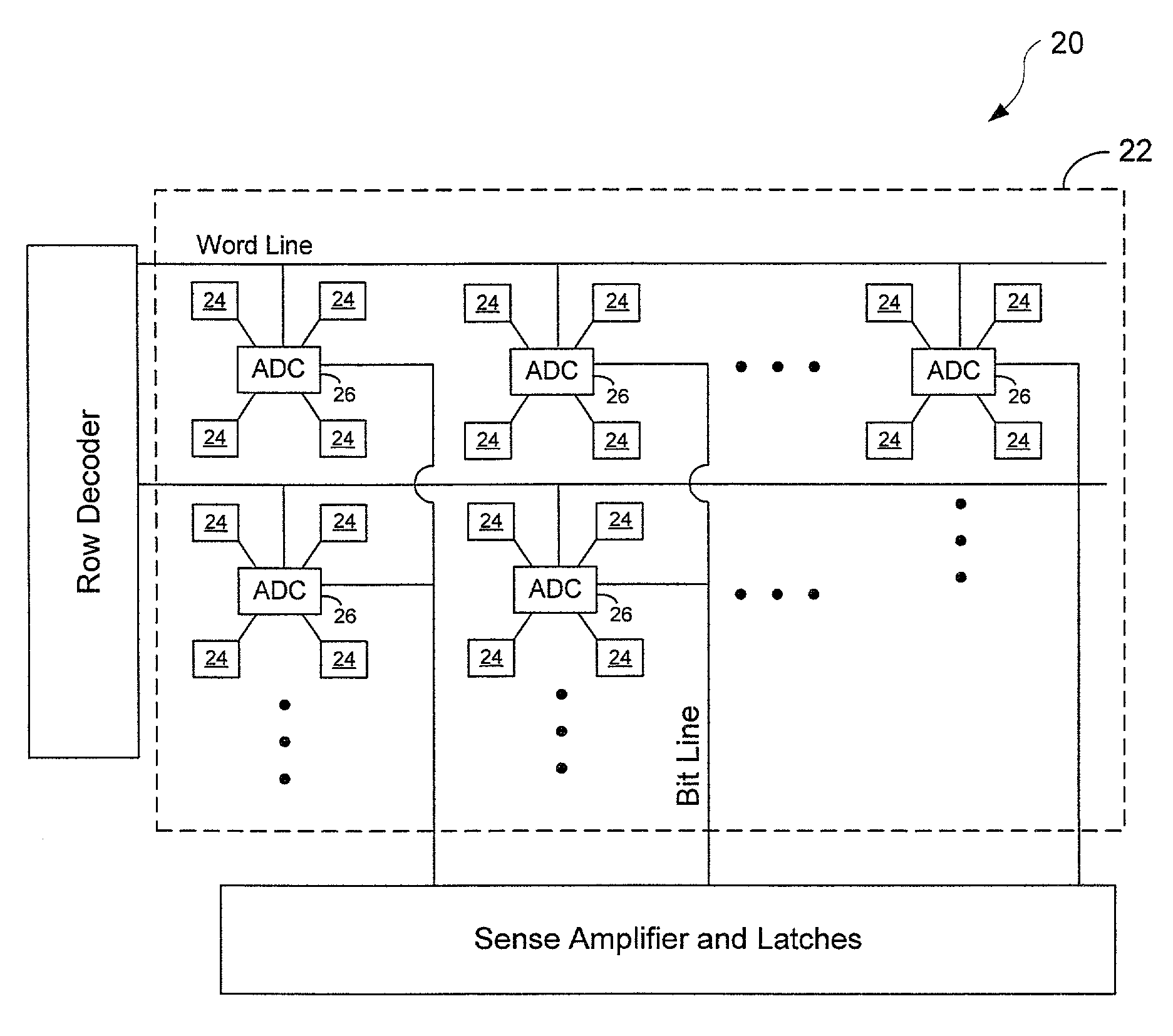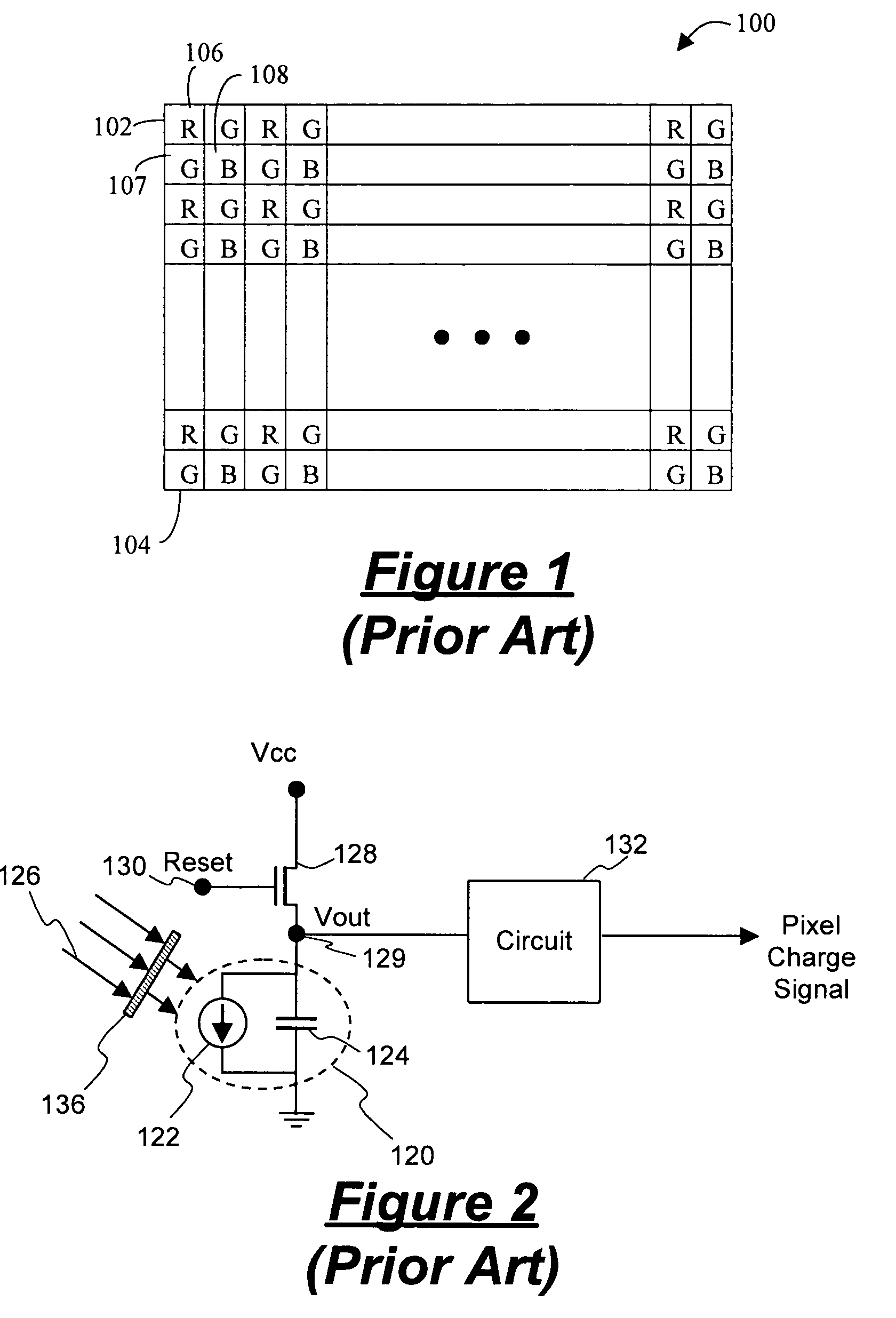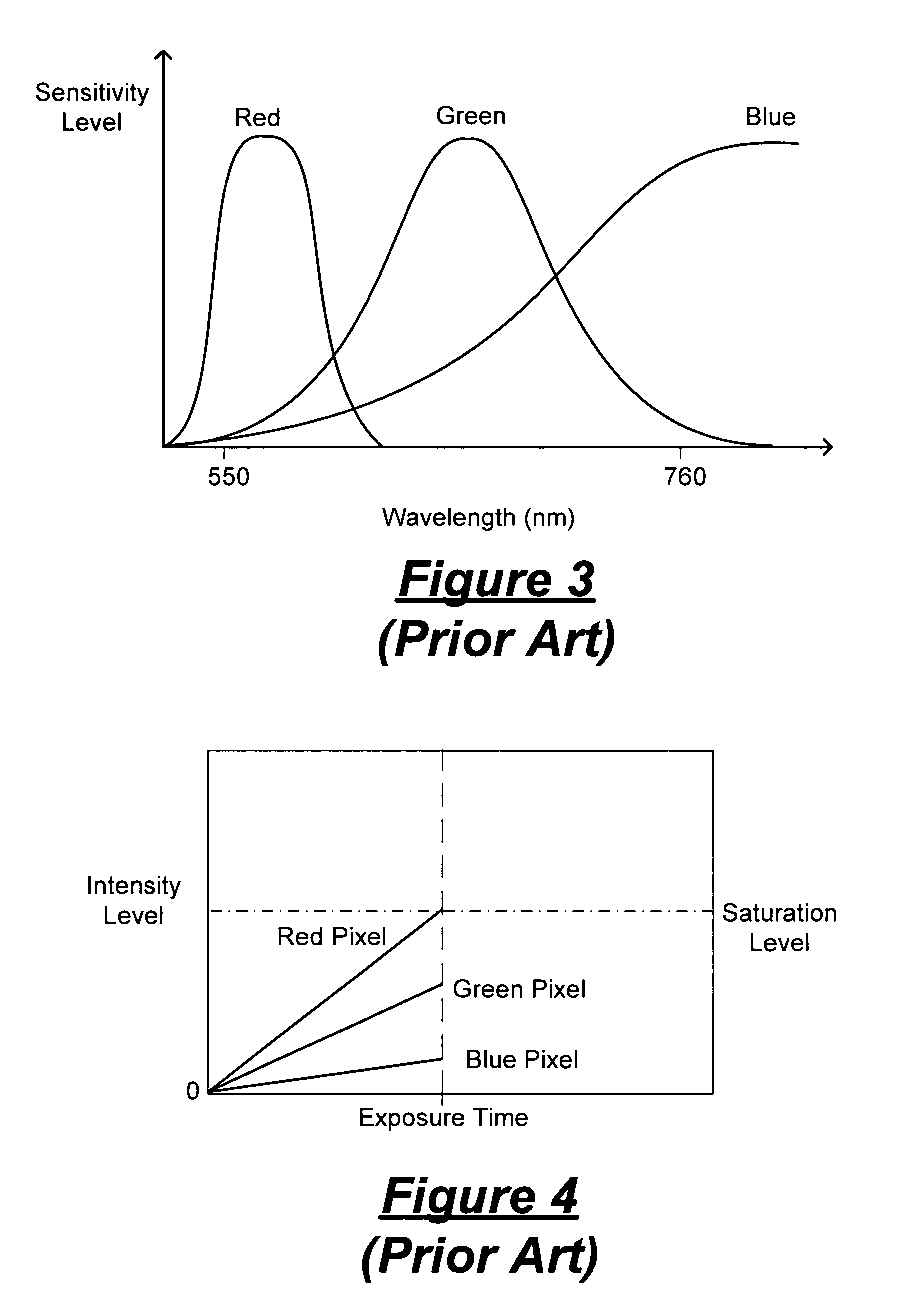Digital image sensor with improved color reproduction
a digital image sensor and color reproduction technology, applied in the field of image sensor systems, can solve the problems of unsatisfactory image artifacts, undesirable results, and red light collection of photodetectors, and achieve the effect of improving signal to noise ratio and color reproduction capability
- Summary
- Abstract
- Description
- Claims
- Application Information
AI Technical Summary
Benefits of technology
Problems solved by technology
Method used
Image
Examples
Embodiment Construction
[0034]According to the principles of the present invention, a digital image sensor uses sensitivity-dependent exposure control whereby different groups of photodetectors with different sensitivity levels are subjected to different amounts of exposure time. An image thus captured has improved signal to noise ratio (SNR). The sensitivity-dependent exposure control imaging method according to the present invention has particular applications in color applications where the image sensor includes photosensitive elements having different sensitivities to different color spectra. By using the sensitivity-dependent exposure control imaging method, a color image thus captured can have improved color accuracy and improved signal to noise ratio, especially for the less sensitive photosensitive elements.
[0035]The sensitivity-dependent exposure control imaging method of the present invention can be applied to digital image sensors. In the preferred embodiment, a digital pixel sensor is used. In ...
PUM
 Login to View More
Login to View More Abstract
Description
Claims
Application Information
 Login to View More
Login to View More - R&D
- Intellectual Property
- Life Sciences
- Materials
- Tech Scout
- Unparalleled Data Quality
- Higher Quality Content
- 60% Fewer Hallucinations
Browse by: Latest US Patents, China's latest patents, Technical Efficacy Thesaurus, Application Domain, Technology Topic, Popular Technical Reports.
© 2025 PatSnap. All rights reserved.Legal|Privacy policy|Modern Slavery Act Transparency Statement|Sitemap|About US| Contact US: help@patsnap.com



